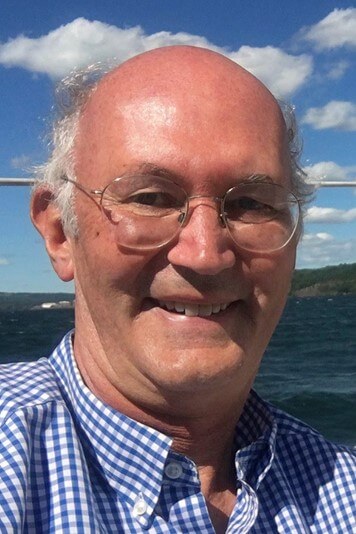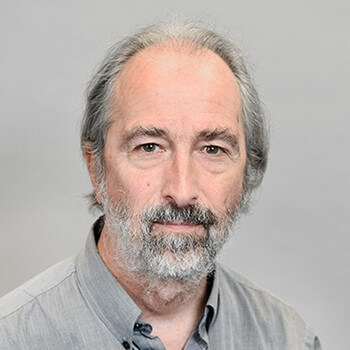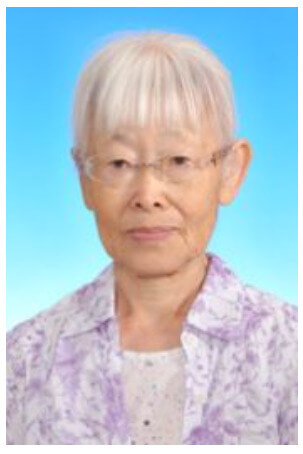This award is intended for outstanding senior members of the SMBE community (25 years post-Ph.D.). The primary criterion is a record of truly outstanding research that has contributed broadly to the field of Molecular Biology and Evolution. The ideal candidate will be one whose career embodies the values of the society, for example in mentoring, outreach, and teaching. The prize includes recognition at the annual SMBE banquet, a cash prize and a travel award to attend the annual meeting. This award will be made annually and initiated by the SMBE council.
2024 SMBE Lifetime Research Achievements Award Winner: Marcus W. Feldman

Marcus Feldman, professor of biology at Stanford, became a faculty member at Stanford in 1972. He has been elected to the National Academy of Sciences, the American Academy of Arts and Sciences, and the American Philosophical Society. He helped to originate the quantitative theory of cultural evolution and how this theory is related to interactions between biology and culture. He also founded the mathematical theory for how rates of mutation, recombination, dispersal, and cultural transmission can evolve. He has collaborated extensively with Chinese demographers, especially on issues related to the consequences of the male-biased sex ratio in China. He has received the Dan David Prize (Israel), the Motoo Kimura Prize (Japan) for his work on evolution, the University of Western Australia’s lifetime achievement award from the Faculty of Engineering, Computer Science, and Mathematics, and the Lifetime Achievement Award from the Society for the Study of Evolution. Many of Feldman’s postdoctoral fellows and graduate and undergraduate advisees are now faculty members in major universities in the United States, Canada, China, Europe, Israel, and Australia. He has received Stanford’s awards for advising undergraduate and graduate students.
2023 SMBE Lifetime Research Achievements Award Winner: James Lake

Jim Lake has produced outstanding research on topics that are directly relevant to SMBE and to the SMBE Lifetime Contribution Award. Jim has been a leader in developing original phylogenetic methods for dealing with the complex patterns in real molecular data, and he has used them to tackle some of the most difficult and important phylogenetic problems. His meticulous work over many years demonstrated that a tree in which eukaryotes branch within the Archaea (his “Eocyte tree”) was better supported than the 3-domains tree of life that appeared in most textbooks. Careful work from many labs using additional methods and increased sampling have now consistently supported a version of Jim's tree. In another major contribution, Jim used his methods and approaches to construct a "new animal phylogeny" that divided bilaterian animals into 3 great branches. The new animal phylogeny was both radical and surprising when he first proposed it, but it is now widely accepted. It has revolutionized our understanding of animal evolution.
Analyses from Jim's lab were among the first to clearly demonstrate that eukaryotic genomes contain a mixture of genes of differing susceptibility to HGT, a conserved core of "informational genes" vertically inherited from Archaea and a larger pool of more frequently transferred "metabolic genes" from diverse prokaryotes. In a companion paper, Jim proposed the highly influential "complexity hypothesis" which explained why these genes differed in their frequency of HGT. Building upon this work and using his new method of “conditioned reconstruction” Jim subsequently proposed the “ring of life hypothesis” for the origin of eukaryotes. In the "ring of life", eukaryotes sit simultaneously on a bacterial branch and archaeal branch - and it is this that seals the ring.
In summary, Jim Lake's outstanding scientific contributions, exemplary citizenship and mentorship of young scientists, make him a truly worthy recipient of this year's SMBE Lifetime Contribution Award.
2022 SMBE Lifetime Research Achievements Award Winner: Charles Aquadro

Charles (“Chip”) Aquadro earned a BS (biology) at St. Lawrence University, in 1975, an MS in zoology at University of Vermont in Burlington, in 1978 (with C. W. Kilpatrick), a PhD in population genetics at the University of Georgia, Athens, in 1981 (with John C. Avise), and was a postdoctoral fellow in the Laboratory of Genetics, National Institute of Environmental Health Sciences in Research Triangle Park, NC (with Charles H. “Chuck” Langley). Chip accepted a faculty position at Cornell in 1985 and is now the Charles A. Alexander Professor of Population Genetics in the Department of Molecular Biology and Genetics, with a joint appointment in the Department of Ecology and Evolutionary Biology. His research and teaching is focused on population genetics, particularly experimental and statistical analysis of DNA sequence variation and evolution primarily in Drosophila, but also in including humans, viruses, plants, horses, naked mole rates, birds and fish. Among his discoveries (with Dave Begun) is the genome-wide relationship between the regional rate of recombination of a gene region and that level of nucleotide variation in that region of the genome in outcrossing organisms, and the role that linked natural selection (both positive and negative) play in driving that positive correlation. Most recently he has developed and applied functional tools and analyses to test population genetic predictions of strong natural selection on germline stem cells in several species of Drosophila. Chip has been fortunate to have and have had amazing students and postdocs; they are to him his greatest contribution to science.
2021 SMBE Lifetime Research Achievements Award Winner: Michael Lynch

Michael Lynch is currently the Director of the Biodesign Center for Mechanisms of Evolution, Arizona State University, where he also heads an NSF-funded center grant focused on the cellular mechanisms of evolution. His research has long focused on the genetic mechanisms of evolution, particularly at the genomic and cellular levels, and on population-genomic analysis. His lab works with a number of model systems, most notably the microcrustacean Daphnia, the ciliate Paramecium, and numerous other unicellular prokaryotic and eukaryotic species. Current research foci include: the evolution of replication and transcription error rates; the consequences of genome duplication; the 5000 Daphnia genomes project; global patterns of genomic and cellular diversity in ciliates; the evolution of the transcriptional vocabulary; and long-term microbial evolution under regimes differing in population size, mutation rate, and degree of nutrient replenishment. All of this empirical work integrates with theory development. Lynch received his undergraduate degree in biology from St. Bonaventure University, and a Ph. D. in Ecology and Behavioral Biology from the University of Minnesota. He has previously held faculty positions at the University of Illinois, University of Oregon, and Indiana University. He is a member of the US National Academy of Sciences, and of the American Academy of Arts and Sciences; and is past president of the Society for Molecular Biology and Evolution, the Genetics Society of America, the Society for the Study of Evolution, and the American Genetics Association. Three widely cited books are Genetics and Analysis of Quantitative Traits (with Bruce Walsh, 1998), The Origins of Genome Complexity (2007), and Evolution and Selection of Quantitative Traits (with Bruce Walsh, 2018). His work is perhaps best known for its focus on the creative role played by random genetic drift and biased mutation pressure in driving diversification of genome- and cell-level features across the Tree of Life. Much of the research being done by others on the mutational meltdown, duplicate-gene subfunctionalization, and the drift-barrier hypothesis dates back to theory on these processes developed in the Lynch lab.
2020 SMBE Motoo Kimura Lifetime Contribution Award Winner: Brian Charlesworth

Brian Charlesworth is a Senior Honorary Professorial Fellow at the University of Edinburgh. He was born in Brighton, England in 1945. He obtained his PhD in genetics from Cambridge University in 1969, and was a postdoctoral fellow with Richard Lewontin at the University of Chicago, 1969-1971. He subsequently worked at the Universities of Liverpool, Sussex and Chicago, moving from Chicago to Edinburgh as Royal Society Research Professor (1997-2007), and retired from his position as Professorial Fellow in 2010.
His research has focused on the application of population genetics to evolutionary biology, using both theoretical and empirical approaches, with an emphasis over the past 35 years on molecular evolution and variation. In collaboration with Deborah Charlesworth and Chuck Langley, he constructed theoretical models of the population dynamics of transposable elements (TEs), and applied them to the analysis of data on element frequencies in natural populations of Drosophila. The results supported the selfish DNA hypothesis for the maintenance of TEs by transpositional replication in the face of their deleterious effects on host fitness, which in part are caused by the generation of chromosome rearrangements by ectopic exchange. He helped to develop the theory of background selection, according to which the elimination of selectively deleterious mutations affects patterns of molecular variation and evolution at sites that are linked to the targets of selection. His theoretical work has shown that, when recombination rates are very low, selective interference between deleterious mutations significantly alters their effects on variability at linked neutral or nearly neutral sites, consistent with observations on genomic regions with low rates of recombination. He has also helped to develop and apply methods for estimating selection on both coding and non-coding sequence variants within populations, and has contributed to both theory and data on the evolution of sex chromosomes and recombination rates.
He is a Fellow of the Royal Societies of London and Edinburgh, Honorary Fellow of the American Academy of Arts and Sciences, and International Member of the National Academy of Sciences. He has been awarded the Darwin Medal of the Royal Society in 2000, the Darwin-Wallace medal of the Linnean Society, and the Thomas Hunt Morgan Medal of the Genetics Society of America. He has published over 250 research papers and three books (two co-authored with Deborah Charlesworth – Evolution: A Very Short Introduction and Elements of Evolutionary Genetics).
2019 SMBE Motoo Kimura Lifetime Contribution Award Winner: Wen-Hsiung Li

Wen-Hsiung Li is a Distinguished Research Fellow at the Biodiversity Research Center, Academia Sinica, Taiwan, and James D. Watson Professor Emeritus at the University of Chicago. Li received his PhD in applied mathematics from Brown University in 1972 and is a member of the US National Academy of Sciences and Fellow of the American Academy of Arts and Sciences. He received the 2003 Balzan Prize for Genetics and Evolution, 2009 Mendel medal, and the HUGO 2008 Chen Award. He was President of SMBE in 2000. His research interests include molecular and genomic evolution, methods for DNA sequence and genomic data analysis, and computational biology.
He is the author of the textbooks Fundamental of Molecular Evolution (co-authored with Dan Graur), and Molecular Evolution. He has published more than 400 peer-reviewed publications. His works have been cited more than 65,000 times with an H-index of 103.
2018 SMBE Motoo Kimura Lifetime Contribution Award Winner: Tomoko Ohta

I was born in 1933, and graduated from the University of Tokyo in 1956. At that time, female students were very few in Japanese Universities, and it was difficult to get a good job in a professional field. I spent a few years at the publishing company doing editorial tasks such as proof-reading. I was not good at this job and was looking for a research position at a university or an institute. Fortunately, the Kihara Institute for Biological Research moved from Kyoto to Yokohama and I was hired. There I worked on plant cytogenetics. Then I had a chance to study at North Carolina State University. After finishing my PhD in 1966, I found a position at the Kimura Laboratory of the National Institute of Genetics, Mishima, Japan, where I started research life on molecular evolution and population genetics. It was a good time to start research in this field, because Kimura was thinking to examine biochemical data from the standpoint of population genetics. He proposed the neutral theory of molecular evolution in 1968. In examining the neutral theory of molecular evolution, I was puzzled by three problems. 1: What are borderline mutations between the selected and the neutral mutations? 2: Why the molecular evolutionary rate depends on year rather than generation time? 3: Why heterozygosity is relatively insensitive to population size? I found that, by incorporating nearly neutral mutations, mostly slightly deleterious, between the selected and the neutral classes, one may explain the questions. I published the theory in 1973. In this century, genome data have tremendously increased and they tend to support the neutral and nearly neutral theories. Genome projects and genome diversity projects have been influential. The range of near-neutrality depends on protein structure and function. Now molecular systems on dynamic protein folding and degradation are being clarified, which suggest versatile nature of protein function.
Recent progress on gene regulation at the molecular level is remarkable. It is now clear that gene regulation depends upon numerous molecular machineries involved in chromatin structure and function. Until recently it has been thought that transcription factor binding to the specific regulatory region mainly controls gene expression. Now it is known that chromatin accessibility is important for transcription factor binding. Chromatin is mainly composed of histones and DNA, and very important for epigenetic processes. The epigenetic phenomena are very complicated and linked to various modification of chromatin components, i.e., DNA methylation, histone methylation, phosphorylation, acetylation, etc. Together with such modifications, RNA and non-histone proteins participate in controlling chromatin structure and function.
Let us consider how the new knowledge on gene expression relates to the neutral and nearly neutral theories. Sometime ago, gene regulatory systems were recognized to be robust. To be robust implies that the system is insensitive to mutations and other perturbations, and is thought to be caused by complex connections of gene expression pathways. I considered that this idea is important to make the range of near-neutrality larger, and hence the contribution of nearly neutral mutations becomes larger. It is now evident that numerous molecular machineries on chromatin structure and function are responsible for robustness. Many of the amino acid substitutions of a component protein of molecular machineries of chromatin are thought to have very small effects and become nearly neutral. Of course some amino acid substitutions may have a significant effect on gene expression or other chromatin functions, and natural selection determines their fate. It is amazing to see that genetic systems are remarkably complex but at the same time versatile. It is difficult to imagine how such complex systems could have evolved. Noteworthy is the fact that various subsystems are repeatedly utilized in evolution. It is important to recognize that these subsystems often have self-organizing properties. Then it is not needed to build subsystems from individual components. I am lucky that I have lived long enough to see such progress in our field, and continue my study at the Akashi Laboratory of the National Institute of Genetics, Japan.
2017 SMBE Motoo Kimura Lifetime Contribution Award Winner: W. Ford Doolittle

W. Ford Doolittle was born in Urbana, Illinois in 1942. He attended Harvard College (BA in Biochemical Sciences) and Stanford University (PhD in Biological Sciences, with Charles Yanofsky). After postdoctoral work with Sol Spiegelman and Norman Pace, he took up a position at Dalhousie University, in Halifax, Nova Scotia, where he has been ever since. For twenty years he directed the Evolutionary Biology Program of the Canadian Institute for Advanced Research. His 300+ papers include experimental proof of the endosymbiont hypothesis, early molecular studies of cyanobacteria, the first shuttle vector and mapping systems for Archaea, and the metagenomic discovery of actinorhodopsin. Of a more theoretical nature are his developments of the "introns-early" hypothesis, the notion of "selfish DNA", Constructive Neutral Evolution as an alternative to selection, and a reconsideration of the Tree of Life in the light of lateral gene transfer. He is currently more concerned with philosophical issues, such as the meaning of "function" and the possibility of "Darwinizing Gaia". He is a Fellow of the Royal Society of Canada and a member of the US National Academy of Sciences, and the winner of the 2013 Gerhard Herzberg Gold Medal and the 2017 Killam Prize in Natural Sciences, Canada's highest awards.
2016 SMBE Motoo Kimura Lifetime Contribution Award Winner: Nancy Moran

Nancy Moran's long-term interests are in the evolution of biological complexity, such as that apparent in complex life histories, in intimate interactions among species and in species-diversity of clades and communities. Her research has focused extensively on symbiosis, particularly between multicellular hosts and microbes. In her storied career, she has demonstrated ancient coevolution between aphids and their plant hosts, and has characterized mutualistic symbiotic interactions between aphids and Buchnera bacteria and between other insect and symbiont clades. She found that these mutualisms are ancient, dating to the origins of major insect clades, and that the long term vertical transmission of the bacterial symbionts has caused extreme genome degradation and shrinkage. Her ongoing projects include phylogenetic and genomic studies of previously unstudied insect symbioses, experiments on gene expression of symbionts within hosts, computational reconstruction of the content and arrangement of genes in bacterial ancestors, and experimental investigations of coevolved gut communities within social bees. She has previously been awarded a MacArthur Fellowship and the International Prize for Biology, and has been a member of that National Academy of the Sciences since 2004. She is currently the Leslie Surginer Endowed Professor in the Department of Integrative Biology at the University of Texas, Austin.
